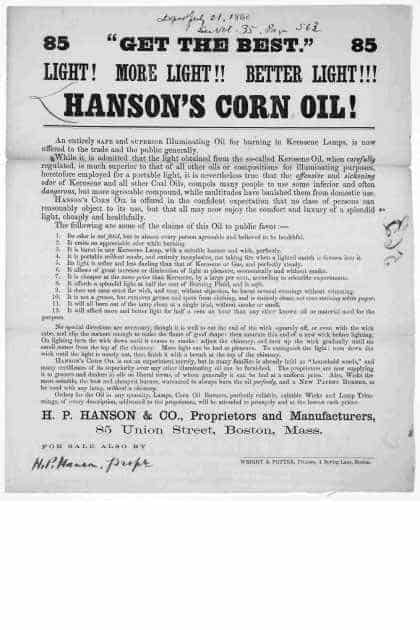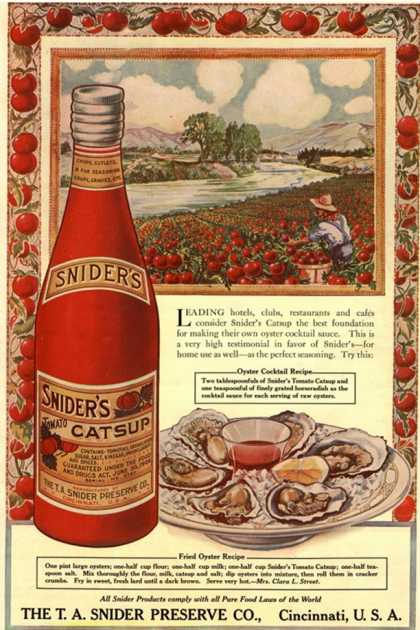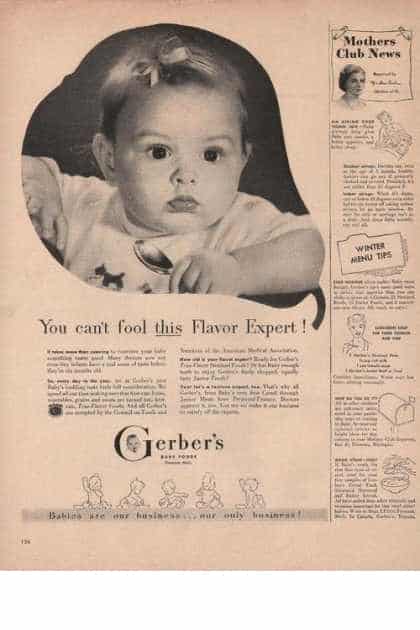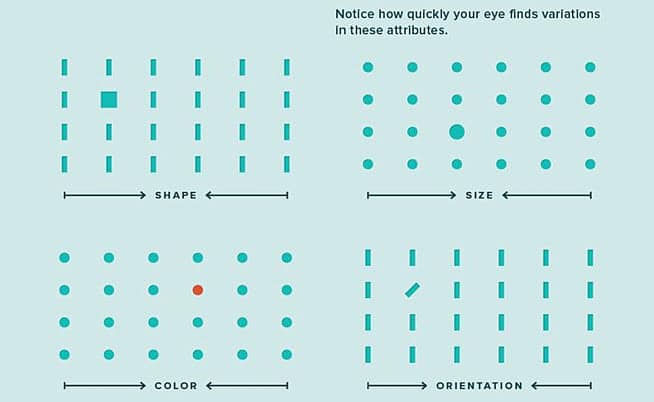Product Photography
Get a picture to show yourself or products in the best light
When a Smartphone Isn’t Enough, Turn to Professional Photography
At Terzetto Digital, we strive for your business to Get Seen with clarity. From product photography, staff headshots, or pictures of your services, we offer photography in select digital marketing plan levels.
Just another way that we are committed to working with you to achieve success and to help you Harmonize Your Digital Marketing℠.

What is Product Photography?
When your business communicates with images, whether that is a photograph of products, services, location, or staff, you’re able to convey far more information than mere words. It doesn’t matter what industry that your business is in, or if you sell products online, or services to customers in a specific geographic region. Telling your brand story through product photography is highly effective in capturing the attention of both prospects and customers alike.
Photography started almost 200 years ago, with the first known image from a camera looking out a window in France. Over the ensuing 100 years, the importance of photography would be cemented in our minds through an adage coined in 1921, “a picture is worth a thousand words”. This phrase not only reflected how society at that time had embraced photography cameras, but also the increase in response rates of advertisements after adding product photography. Advertisements in the 1800s were primarily written text. These evolved over time to include basic hand drawn illustrations, and by the turn of the century in 1900, complete product lifestyle stories were being told with illustrations. By the mid-1900s, advertisements on city buses, billboards, and in newspapers were far more than written text, or illustrations. Real images of people using products or services in daily life, developed from camera film in dark rooms, became the most effective way to sell those product and services.
Fast forward to today and it would be difficult to imagine an advertisement in any medium that didn’t include photography of some kind. Perhaps that is why the question of “what is product photography” has so many different meanings. From an obvious perspective, it is a photograph of a product. But even when you look back to advertisements from almost 100 years ago, they would include an image of the product and then some form of how that product was used. An image is where storytelling begins, and why the definition of product photography is synonymous with visual communication:
Products Become a Solution – as is the case with any successful advertising strategy, the addition of photographic images had a positive impact on sales. Consumers were able to see beyond the basic product descriptions to envision how these products could solve a particular problem they experienced.
Envy of Peers Drives Sales – the 2016 movie, “Keeping up with the Joneses”, highlights the jealousy of suburban neighbor lifestyles. This is also an idiom that gained popularity during the 1950s as both print ads and television showcased more images of products being used in suburban homes.
Having Expensive Taste – yet another idiom to enjoy is this 2014 YouTube video titled “Champagne taste on a beer budget”. It highlights how product photography elevates a consumer’s taste, spending more than they can afford. Good for your small business but caused record credit card debt in 2019.
Services Allow Leisure Time – with local advertising like Google Local Service Ads, it’s not always about featuring products. Using photography to highlight services, such as plumbers, house cleaning, or a pool cleaner, shows consumers how they can outsource tasks to enjoy more leisure time.
Where Would Product Photography be Used?
Now that we’ve examined photography from a historical perspective, let’s discuss this visual communication method from a more modern perspective. According to a 3M Visual Systems Division presentation handout from 1997, humans can process visuals 60,000 times faster than text. There has been some debate that this figure was never scientifically proven. But in research from 2014, MIT neuroscientists concluded humans can process an image in as little as 13 milliseconds. Someone smarter than me did the math and converted those 13 milliseconds to the equivalent of processing visuals 15.4 times faster than text. Yes, there is a large discrepancy between 60,000 and 15.4 times, but even at the lower end, it’s still significantly faster than reading text.
Let’s try an experiment to see which one seems faster. Look at the image below to see how quickly you can find the variations between the attributes shown:
Now let’s describe, as written text, what you just comprehended visually:
This image has sections that are divided equally into four main quadrants. Each quadrant has six columns with various size, shape, or colored lines, cubes, and circles. The upper left quadrant is labeled as “shape”, with four vertical lines in each of the six columns. The difference in that quadrant appears in column two as the vertical line in position two is about three times wider than the other lines, appearing as a cube. The lower left quadrant is labeled as “color”, with four circles… must we continue?
Hopefully this experiment proves that processing information with images is much faster than written text!
Okay, so we understand the speed factor, but what else can visual communications do to improve your bottom line?
- Images Increase Comprehension and Retention – we cannot in good faith quote more bogus statistics that people remember 10% of what they read, 20% of what they see, 30% of what they hear, etc. We can simply ask you to confirm this theory based on the above test. Perhaps you can still visualize the differences between the four quadrants after not looking at that image for a few minutes. If that is the case, then it seems reasonable to conclude using product photography in your advertising will result in better comprehension and recall of the ad for your target audience.
- Photos Create Emotional Connection – finally, something that doesn’t require scientific proof! It seems that everyone knows in their gut how impactful an image can be, whether it represents a person, place, or thing. Images evoke emotion that can stimulate our imagination or elevate our creative thinking. This is the reason you see such sad photos when non-profit groups ask for donations. In contrast, a vacation destination will show you the most breathtaking landscapes, exciting activities, and delicious food.
- Pictures Tell Great Stories – this concept deserves to be repeated. Consider you’re on vacation, and maybe you mail postcards to older generations and post on social media for newer generations. Both methods use pictures to tell friends and relatives a story. There should be no difference when it comes to marketing your business. Leverage the power of images to show your products or services in action to create a memorable moment that results in a sale.
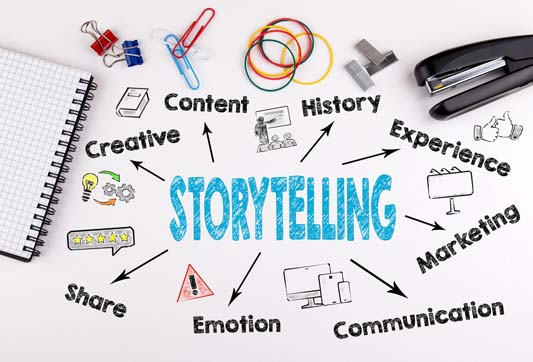
Based on all the above facts, here are the perfect places to use product photography:
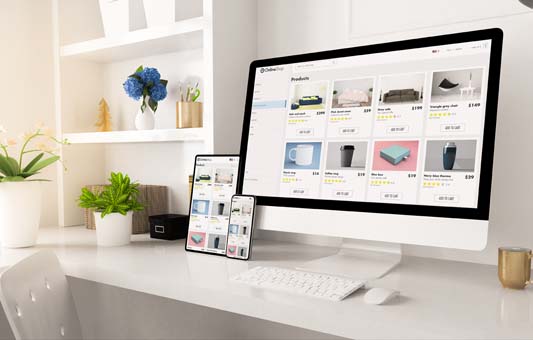
Small Business Website Design – your website is a 24-hour, seven day a week salesperson who never complains or takes vacations. Why not reward that behavior with beautiful imagery that appeals to your target audience, helping your website close more deals! Yes, your website will still need content writing services to produce great written copy since search engines like Google can’t read images. But the results of combining these elements, especially when it comes to blogging, will be evident in your marketing analytics.
Ecommerce Marketing – when you sell your own products in an online ecommerce store, don’t worry about platform questions like Woocommerce vs Shopify. All the major ecommerce website platforms will perform better if you have stellar product photography. And if you’re a seller on Amazon, then you know the importance of Amazon product photography. It’s not appealing to use the same manufacturers image that 30 other resellers have. Make sure you stand out in the Amazon Marketplace by having custom product photos done in various angles and photograph all the product use cases.
Email Marketing – from product launch emails to monthly newsletters and special discount offers, your product photography will easily pay for itself with email marketing campaigns. Although this one can be a bit of a technical challenge considering that end users can disable images from immediately displaying in their email clients. But fear not, if you use the best email marketing service, they can overcome this limitation so that your images can shine through.
Digital Advertising – with all the marketing noise out there, images can help your banner ads get noticed. Using animated GIFs to introduce motion, it’s easy to tell your product or service story to increase your click-through rate. Make an even bigger impression by adding those same images to the landing page seen after clicking on the ad. This combination of consistency in messaging with vibrant imagery evokes that emotional connection so they click that “Buy Now” button.


Social Media – it’s no secret as to why Instagram, the photo and video sharing platform, has grown so quickly. You post a picture and that’s it. Users scroll through their feed, liking pictures that catch their attention, or opening the caption to learn more. It’s a brilliant example of how quickly we can process visual imagery even at the speed of a smartphone scrolling finger.
Video Marketing – the visual differences between photography, with its still images, and videography, with its moving images, is significant. Yet these mediums complement one another and have become almost synonymous. That is why digital single lens reflex cameras (DSLR) started incorporating high-definition (HD) video recording capabilities back in 2008. You can very effectively incorporate product photography images in videos, leveraging on the Ken Burns effect to zoom in on a still image, then pan left or right to simulate movement.
Print Media – while physical material is typically not included in a digital marketing strategy, you can easily repurpose high-resolution product photography for printed materials. This could be product specific, such as for the product packaging, creating a physical end user guide, or for creating warranty registration cards. In terms of advertising, these product images could be used to upsell other products by adding discount coupons in shipments, buying advertising space in local postal service mailers, or for physical banners and flyers to handout at trade shows and networking events.
When Would Product Photography be Used?
You should be considering images in almost all aspects of your digital marketing plan. There are so many benefits to product photography that we’ve already covered, but perhaps the best reason is to break up long blocks of written copy. When you distill the purpose of digital advertising, it’s all about grabbing the attention of your target market, helping them to see how your products or service can solve their problems, and then triggering that emotional switch that makes them buy now.
Let’s look at some techniques that can be used to combine great visuals with written words:
- Content Writing Services – what comes first, the written text or the image? This is a chicken and egg conundrum for sure. While it’s often best to involve professional copywriting services from the beginning, when they start may vary depending on the situation. One easy way to answer this is to look at the type of content creation you need to produce:

- Product Photography – this requires a team approach to coordinate in advance. This way your local photographers can understand the story you want to tell in pictures, while at the same time, those writing copy can scale back or expand the story by understanding photo constraints.
- Services Photography – always start with the local photographers on this one. Your staff can help guide them based on the types of services that need to be photographed. The written copy can then be created around the resulting images.
- Website Content and Blog Posts – these will tend to be a mix of sales copy and editorial copy, therefore it’s best to start with copywriting services and select images to match the content.
- Digital Advertising – another one that requires a team approach; however, the copywriting should lead the discussion here as this requires more sales and marketing coordination.
- Graphic Design Services –many local photographers are very experienced at their craft, with the resulting photographs requiring little, if any, post-production editing. While they would most certainly be skilled at Photoshop, it’s always a good idea to hand off the images to graphic design companies as part of the content creation process:
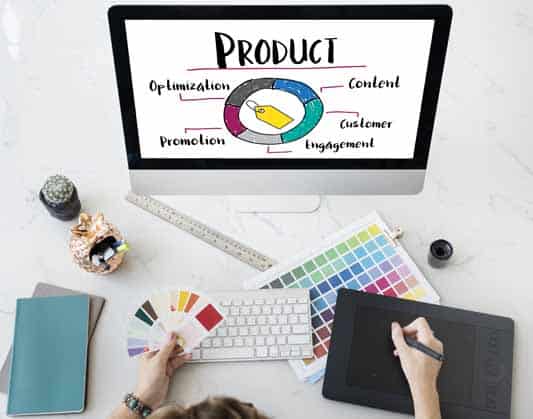
- Content Layout – one mistake we see novices make, is that they want to cram as many words and images as possible on everything. This results in a busy layout, causing confusion and a lack of action by your potential customers. In this case, less can be more, by leaving what is called “white space” which allows the eye to settle, focusing on what’s important to your sales goals.
- Image Editing – a perfect photograph, from a composition and lighting perspective, may still require editing. Perhaps just to crop out something in the background that is not relevant to the copy, or to add other graphical elements on top of the photograph to make it more meaningful.
- Image Size Optimization – in terms of physical storage size, a high-resolution photograph can be around 30 Megabytes in size. This may not mean much to the average person, but if not optimized, that image will slow down your website and then people will notice (in a bad way). An over-optimized image tends to look grainy, that is why you’ll want to leave this step to a pro.
Who is Product Photography For?
Any sized business can benefit from having great photography. Even a small business or startup with relatively few products, services, or employees will see a good return on a product photography investment. But be careful, your ROI can quickly evaporate into large legal fees if you do not follow proper image copyright laws.
Disclaimer: TriValley Internet, Inc. DBA Terzetto Digital does not provide legal services or advice. The content on the Terzetto Digital website is for informational purposes only. It is not intended to substitute for advice from qualified legal counsel, nor is it to assist you or help you be compliant as you assume 100% responsibility in all legal matters.
Any discussion about images and photography requires an understanding of copyright laws. Don’t let this scare you away as the value of visual advertising far out ways the risks. Here are a few things you should be aware of before getting started:
When You Take Pictures – the instant that you press the shutter button (or tap the smartphone button) on a camera, the resulting image is protected by copyright laws. That’s good for you as the photographer, but did you consider the subject of that photo or the location where it was taken? Other people or property owners may come after you for royalty fees if you did not get a model release or property release signed in advance of taking the photo.
Local Photographers – since the person taking the pictures owns the copyright to it, you’ll want a written agreement in advance about transferring the rights to you as the business owner. Some photographers will refuse to do this, and that’s okay, it’s their right by law. In these cases, they will usually grant you unlimited usage of the photos in your business, but you wouldn’t have the right to sell them to anyone else or to use them for another business that you own.
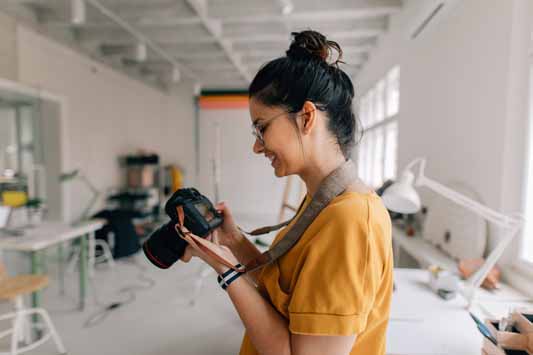
Images Found Online – don’t assume that any image you see on the Internet can just be copied and reused. It’s one of the most misunderstood concepts and can get you in trouble very quickly:
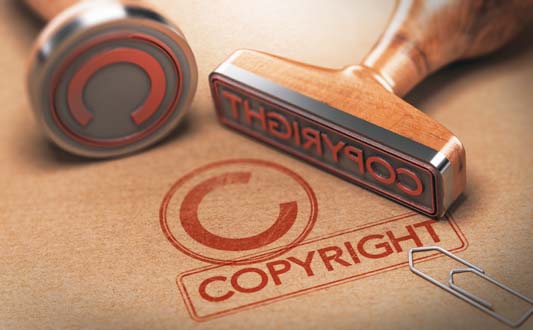
Fair Use of Copyright – after the rights of copyright owners were established, an exception was created that protected those rights, yet allows others to still use the images. Called the Fair Use Doctrine, it allows using copyrighted works for “purposes such as criticism, comment, news reporting, teaching (including multiple copies for classroom use), scholarship or research”. Even if your application of an image falls into one of those purposes, you must also consider four additional factors before deciding if your usage qualifies for fair use.
Attribution or Citing Images – the idea behind this is to give credit to the original creator, whether that is a photographer, graphic artist, or illustrator. You do this by adding the title, author, and source when using the image. But beware unless the image meets fair usage criteria, you might still be liable for copyright infringement. Simply acknowledging the image is not yours may avoid a plagiarism claim but may not give you the right to use it.
Creative Commons License – you can consider this a middle ground between the hard rules on copyright and the less restrictive rules of fair use. Established in 2001 as a non-profit, Creative Commons provides a flexible copyright through six license types, allowing creators to assign granular permissions on how their work can be shared or used commercially without asking for authorization in advance. To use an image, you must follow the rules under which it is licensed, all of which require best practices for attribution, including listing the license type.
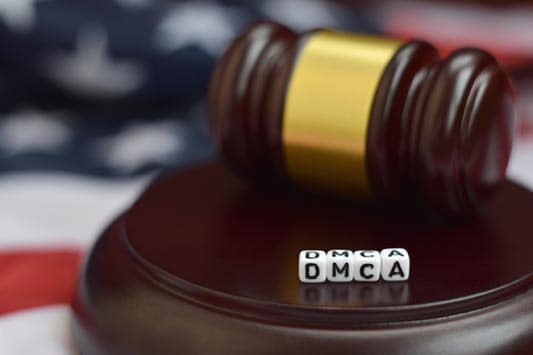
Public Domain Images – many images will have no copyright, which means that they are now in the public domain and can be used by everyone. This can happen if they were never eligible for copyright, or if the copyright has expired, or the copyright holder has released them into the public domain (as in a Creative Commons CC Zero License).
The Digital Millennium Copyright Act (DMCA) – passed in 1998, this is a mechanism through which copyright owners can inform online service providers (i.e., your website hosting company) about infringing material so it can be taken down. Imagine your beautiful blog post which has just stared generating traffic for your website, being taken offline because you copied images.
Searching for Images Online – rather than using a standard search engine, there are a couple of useful search tools that can help keep you out of hot water when it comes to copyright usage:
- Creative Commons Search – search over 600 million Creative Commons Licensed images, some of which can be used for commercial purposes. In 2021, the Creative Commons search engine, known as CC Search, merged with Wordpress to become Openverse.
- Google Advanced Search – allows you to set many different filters to find that perfect image. There is even a “usage rights” criteria to ensure that you only see the images that match your licensing needs.
Hopefully you survived that legal detour, so let’s get back into the options for your business when it comes to how to get great photography for your digital advertising:
Take it yourself – the advantages of social media are that raw, unedited, make-up free, non-staged, spur-of-the-moment photos are acceptable. Some might even say that this helps to humanize your business by creating a more personal connection with your audience. Instead of coming across as an impersonal business owner, people will empathize with the fact that, just like them, you are also busy with your children’s school activities or whatever craziness you want to share. This type of photography is acceptable for your social media presence or website about us page. For usage in other digital marketing, you’ll need to dress it up a bit, both in terms of wardrobe and photo composition.

Stock Photography – the name itself implies cringeworthy photographs of models, many of whom appear in thousands of stock images, in awkwardly staged photos. Like them or not, they do serve a valuable purpose for any small business looking to liven up their website content or advertising strategy. It is possible to find excellent stock images that are both professional looking and inexpensive if you follow a couple of simple rules:
- Choose Premium Royalty Free Images– let’s get this out of the way upfront… don’t confuse the word free in “royalty free” to mean it won’t cost you anything. Most stock images are under copyright, meaning you will need to pay for a license to use them. The term royalty free just means that you can pay for it once, and then you are “free” to use it multiple times thereafter with no additional charges, or royalties as they are called.
There are millions of images when it comes to stock photography, and within those you’ll find everything from cheesy to magnificent. In our experience, you’re better off paying a bit more for higher quality images. For example, istock offers two photo collections, Essentials which are good, and then Signature, which are excellent. Here is an example of the differences:

- Write Copy First – it’s unlikely that you would ever use an image alone to sell anything. Sure, you can place words on top of an image in a social media post and, in that case, you could sell with just an image. But even words placed on an image still need to be meaningful in the context of the image. The point is there will always be words associated with your images, and you’ll need to pay particular attention to those words to choose the right stock image. Here are a few things to consider:
- Relevant to your written copy
- Supports your perspective
- Influences decision making
Custom Photography – when neither your smartphone nor stock photography can match the visual message you want to convey, it’s time to bring in the professionals. Local photographers have the skills to setup the proper lighting, stage the photos for great composition, and to provide any post-production Photoshop edits that you may require. And in case you missed it before, copyright to these images can be transferred from the photographer to your small business through properly executed agreements.
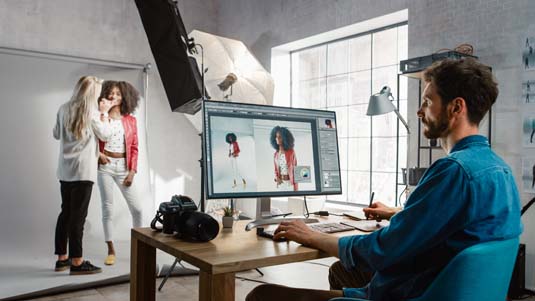
Here are just some of the ways that you can benefit from using local photographers:
Headshots of Owners or Employees – getting personal with your prospects and customers means that you should have pictures of all key staff in various places:
- Website Content – yes, the about us page for sure. But there are also opportunities to continually reinforce that personalization in content marketing efforts like blogging or email marketing newsletters.
- Social Media Management – proper management of your social media presence means more than just a profile picture you uploaded years ago. Create a series of posts by staff members, embedding their headshot into the photo to give them credit.
- Email Signature Design – have you ever received an email from someone that has their picture in the signature area? Seeing them in your inbox makes it seem like you know that person, so you’ll tend to respond to those emails before others that might have arrived first.
Product Photography – as if you haven’t heard this enough already, but it’s true, these professionals can give you the sharpest, best lit, most exciting lifestyle product shots that will drive your ecommerce sales through the roof.
Location Photo Shoot – when it comes to the complexity of shooting on location, you’ll want to hire local photographers to get it right the first time. Whether you need to highlight your production capabilities, want to show off your services in action, or just don’t have the time to travel to a photo studio, let these experts take care of everything.
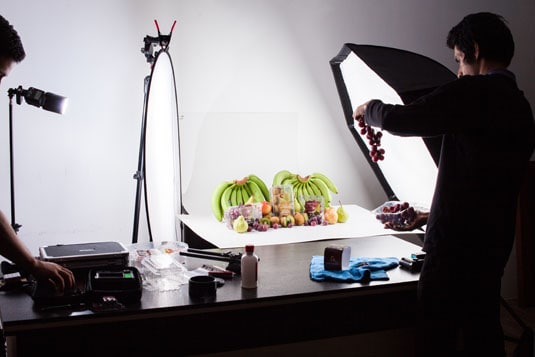
How Much Does Product Photography Cost?
You might be thinking… “I already have a camera in my hand, why do you need to hire anyone?“ While a smartphone is powerful and can certainly produce high-quality photographs, there are other cost considerations when it comes to how to get the best photographs of your products or services. Even as camera technology continues to improve while prices decline, you should compare the investment in equipment and time against that of working with a digital marketing agency to determine which one is more cost effective for your business. Let’s look at what might impact product photography pricing:
- Lighting – by far the most complex part of any photo shoot, product photography lighting requires an enormous investment in lighting equipment, time, and knowledge. There are different considerations when shooting indoors compared to outdoors, but in both cases, you generally need time to setup the lighting and multiple photo assistants to hold light reflectors or move props. Depending on indoor light or outdoor temperature, the heat may require additional time to prep the products (especially if it’s food) or put makeup on if your props are people.
- Lenses – it would not be unusual for local photographers to bring several lenses to a photo shoot. Lenses are both magical and expensive, but you’ll never get the shot you need without having more than one. Controlling the areas that appear sharp and blurring other areas, known as the depth of field, is a function of the lens aperture. Distance also plays a factor, so you may need one lens for detailed closeups, one for mid-range, one for long distance shots, and yet another for wide angle photos.
- Hiring Talent – when you want to do lifestyle staging of products, you’ll most certainly need to hire models. Sure, your staff could sign a model release and just jump in front of the camera. But as pretty or handsome as they may be, they might not be representative of your target demographic. Plus, if you followed the above instructions and have plastered your employee’s faces everywhere, it will seem fake if prospects see your customer service representative using your product.
- Composition – as much art as it is science, understanding how to stage product photography takes years of experience. It’s really the final piece of the puzzle, where lighting, lenses, talent, and your product come together. You can’t just turn on your iPhone camera grid and tell the model to say “cheese”. Knowing what to light and what to shadow, where to place focus and where to blur, the emotion a model should evoke, and where the product should be placed.
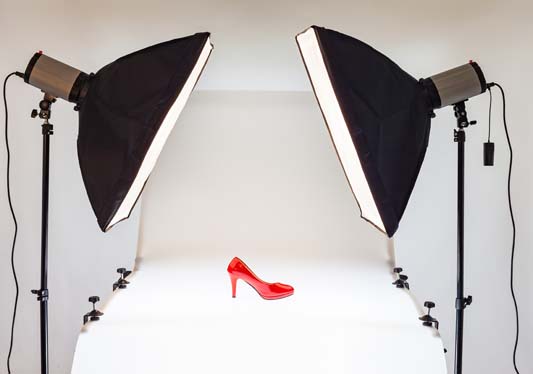
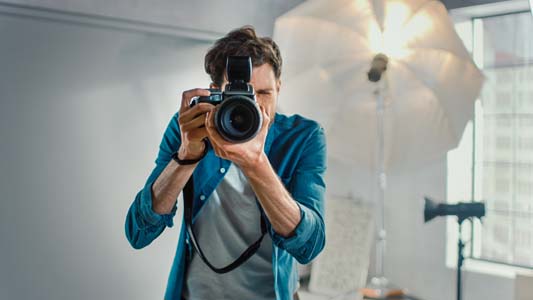
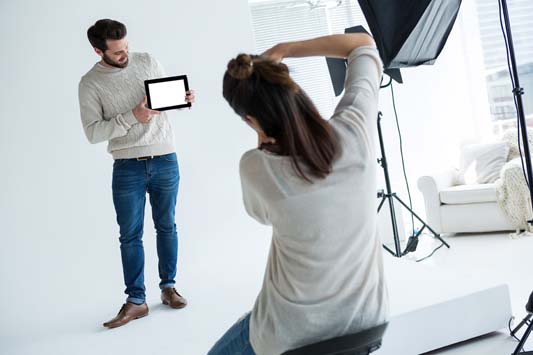
Here is an example from a recent project where the client gave us photos that teachers took while the children played the popular parachute game. Once we saw the composition, we recommended they hire local photographer Tyler Thournir instead. The comparison below (move the arrow up and down to see the comparison) speaks to all the above reasons why professional product photography is best:
 PROFESSIONAL PHOTOGRAPHER
PROFESSIONAL PHOTOGRAPHER
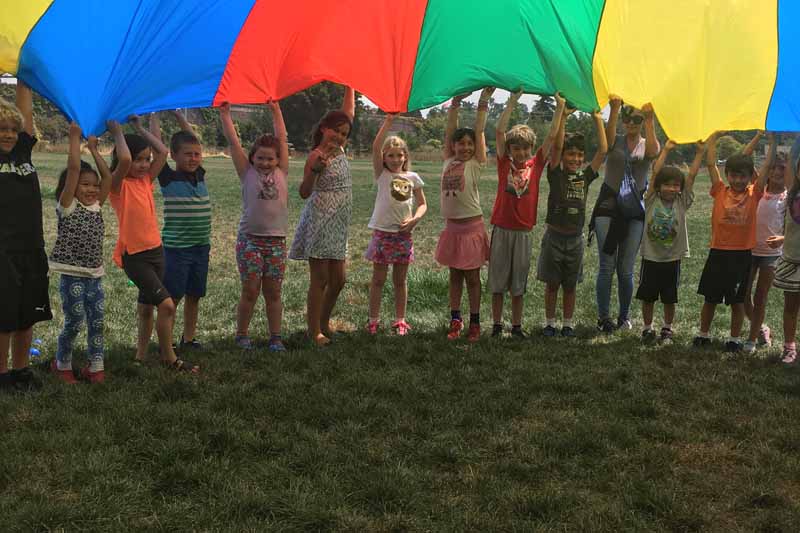 AMATEUR PHOTOGRAPHER
AMATEUR PHOTOGRAPHER
As with anything related to digital marketing, there can be other cost factors that may be less obvious:
- Photoshop Editing – it’s not the cost of the software that will get you, it’s the time that it takes to do the editing. Let’s says you shot 100 high-resolution images of your product and now you want to use them for ecommerce marketing. Those raw images need to be transferred from the camera to a computer (which takes time), opened for editing (more time), cropped for the best shopping cart fit and saved for a small file size (more time), and finally, uploaded to your online ecommerce store. Depending on various factors like computer speed and your internet connection, this process could take anywhere from hours to days.

- Cost of Stock Photography – this one is a split decision, where there are both costs and savings depending on your perspective:
- Cost Factors:
- Cheesy photos will turn away prospects
- Your competition is already using that image
- The cost to license the image for your intended commercial usage
- Saving Factors:
- Can download photos today instead of waiting for post-production
- Diversity of models means better representation without hiring 10 people
- Depending on your needs, a stock photo can be less expensive than a location photo shoot. A good example of this is on our Get Results page, where we wanted to show a group of board members in a corporate building rejoicing over their digital marketing success (a typical reaction after hiring our digital marketing agency 😀). To do a custom location shoot with nine people would have been very expensive, compared to the $9.90 we paid for this royalty-free istock signature image (as a one-off purchase it costs $33, but we buy in bulk).
- Cost Factors:

- Cost of not Using Product Photography – there are so many positive reasons that we’ve outlined as to why you should use images in all aspects of your advertising strategy. Here are some intangible costs you might incur for not using images:
- Poor Product Branding Recognition – prospects may not remember your product compared to your competition’s product
- Dull, Uninteresting – this could be how your product or company is perceived
- Impersonal, Cold – people buy when they feel an emotional connection to a product or brand
Are You Ready to Get Seen by Highlighting Your Business With Better Photography?
Select Digital Marketing Plan Levels Include Product Photography

You'll Get Seen With These Featured Services

Headshots for Website / Social Media
| Starter Plan | Growth Plan | Pro Plan |
|---|---|---|
If you’re using a headshot from 10 years ago, or a selfie-based image where your head looks too big, then let us help you get the perfect picture for your website or social media profiles.

Product Photography
| Starter Plan | Growth Plan | Pro Plan |
|---|---|---|
Display your product in the best light (literally) with our custom staged product photographs, with either a pleasant background or a transparent one. This service is not included in the package pricing and will require a quotation.

Location Photo Shoot
| Starter Plan | Growth Plan | Pro Plan |
|---|---|---|
Want to shoot at your location to highlight products or employees? We come to you, complete with all the gear for a temporary photo studio. This service is not included in the package pricing and will require a quotation.


